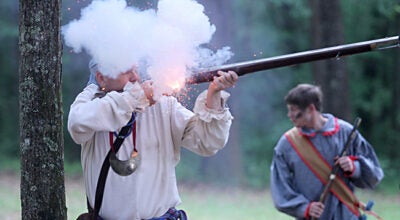A guide to the tree giveaway on Tuesday at the Sportsplex
Published 6:15 pm Wednesday, March 1, 2023
|
Getting your Trinity Audio player ready...
|
The Pike County Chapter of the Alabama TREASURE Forest Association will host a Tree Giveaway beginning at 11:30 a.m. Tuesday, March 7 at the Troy Sportsplex parking lot.
The available trees will include Hornbeams, Tulip Poplar, Scarlet Oak, Red Bud, Red Maple, Bald Cyprus, Dogwood, Elderberry and, possibly, Persimmons.
The closing time for the tree giveaway depends on the number of trees available and the demand.
The following information was made available to assist those who are considering plant small trees this spring to enjoy in years to come.
Hornbeam trees are very similar to beech. Hornbeam sports leaves of vibrant green during the spring and summer. Later these turn to golden yellow, before finally donning a winter coat of deep russet.
Tulip poplars are desirable street trees, shade trees or ornamental trees for large acreage or parks, but they are unsuited for many other urban and residential sites. Young trees have a pyramidal form and are often planted for reforestation purposes because of their attractive shape and rapid growth.Jun 7, 2017
In addition to its value as a timber and wildlife species, scarlet oak is widely planted as an ornamental. Its brilliant red autumn color, open crown texture, and rapid growth make it a desirable tree for yard, street, and park.
Redbuds always remain small, maturing at 20 to 30 feet in height and 15 to 35 feet in width. They generally grow as a small tree with a divided trunk close to the ground. The spreading crown is usually rounded to flat-topped.
You’ll make Mother Nature happy if you start bald cypress growing. These trees are important to wildlife and help hold soil in place. They prevent erosion of river banks by soaking up excess water.
The dogwood’s lustrous green summer leaves give way to brilliant scarlet fall foliage, and even in winter the dogwood’s dark, patterned bark offers unique beauty. The dogwood is also distinguished by its broad natural range, and by being as at home in a natural forest as it is in the home landscape.
The elderberry tree, despite its name, has a shrub-like growth. It can be identified by its serrated leaves that grow in groups of three to nine leaves on each side of a stem. This tree has a moderate growth rate of 6 to 12 feet in the first few years of its growth
Persimmon is native to the southeastern United States. Easily recognized in winter by its unusual rugged, blocky bark, it has thick, dark green leaves that turn a yellow fall color. Female trees produce large orange-brown fleshy fruit that are edible after the first frost.




